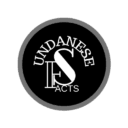Gedung Merdeka in Bandung: History, Function, and Architecture
Gedung Merdeka is located on Asia-Afrika Street in Bandung, West Java, Indonesia. Positioned in a strategic area of Bandung, this historic building is easily accessible from Bandung Train Station. Today, this building, which holds significant historical value for the nation, has been transformed into the Museum of the Asian-African Conference.
History of Gedung Merdeka
Initially, Gedung Merdeka was named Societeit Concordia, serving as a recreational and social gathering place for the Dutch elite living in Bandung and surrounding areas. These individuals included plantation workers, officials, military officers, businessmen, and other wealthy figures. Because of its exclusive clientele, Societeit Concordia was designed luxuriously.
On weekends, especially at night, the building would be filled with visitors attending art performances or formal dinners. Inside, luxurious entertainment facilities were available, making access exclusive to the European elite. A sign inside the building read, “Verboden voor Honden en Inlanders,” meaning “Dogs and Natives are Forbidden.” Even white-skinned individuals who did not belong to the European elite had difficulty entering Societeit Concordia, reinforcing its reputation as a symbol of racial discrimination during the colonial era.
Functions of Gedung Merdeka Over Time
Japanese Occupation (1942-1945)
During the Japanese occupation, Societeit Concordia was renamed Dai Toa Kaman and became a venue for meetings and cultural activities.
Post-Independence Struggles
After Japan’s surrender in 1945, the building was repurposed as the headquarters of the Bandung city government. Following Indonesia’s proclamation of independence on August 17, 1945, Gedung Merdeka became a base for Indonesian youth in their struggle against the Japanese army, which had not yet relinquished control.
Bandung Sea of Fire (1946)
After the Bandung Lautan Api (Bandung Sea of Fire) incident in March 1946, Gedung Merdeka was used as a cultural and entertainment center. Later, during Indonesia’s political transition (1946-1950), it served as a public meeting hall for various administrative bodies.
Asian-African Conference (1955)
In 1954, Bandung was chosen as the venue for the 1955 Asian-African Conference (AAC), where leaders from newly independent Asian and African nations gathered to discuss political and economic cooperation. The building was renamed Gedung Merdeka, meaning “Independence Building.” Renovations were conducted to prepare for this monumental event, emphasizing its strategic location near the Savoy Homann and Preanger Hotels, which accommodated international delegates.
Later Uses
- After the 1955 General Election, Gedung Merdeka was used as the Constituent Assembly Building for drafting a new constitution.
- It later housed the National Planning Agency and the Provisional People’s Consultative Assembly (MPRS) in 1960.
- In 1965, it hosted the Asian-African Islamic Conference, but following the G30S/PKI coup attempt, parts of the building were used as a political detention center.
Museum of the Asian-African Conference
On March 24, 1980, Gedung Merdeka was officially inaugurated as the Museum of the Asian-African Conference by President Soeharto to commemorate the 25th anniversary of the conference.
Read More:
Gedung Sate: Secrets Behind Bandung’s Most Iconic Colonial Landmark!
Architecture of Gedung Merdeka
Gedung Merdeka was designed in 1926 by Van Galen Last and C.P. Wolff Schoemaker, renowned Dutch architects and professors at the Technische Hoogeschool te Bandoeng (now ITB). The building features a striking Art Deco style characterized by grandeur and elegance.
Key architectural highlights include:
- Italian marble flooring, adding to its luxurious appearance.
- A wooden lounge and bar area used for social gatherings.
- Glittering crystal chandeliers, enhancing the sophistication of the interior.
Spanning 7,500 square meters, Gedung Merdeka remains a landmark of Bandung’s colonial-era architecture.
Gedung Merdeka Today
Today, Gedung Merdeka functions as the Museum of the Asian-African Conference, showcasing artifacts, photographs, and historical records related to the 1955 conference. This event was pivotal in shaping the Non-Aligned Movement (NAM), which sought to maintain neutrality during the Cold War between the United States and the Soviet Union.
With its rich historical background, Gedung Merdeka continues to be an important cultural and historical site, attracting researchers, historians, and tourists interested in Bandung’s role in global history.
Read More:
Bandung Sea of Fire: The Epic Scorched-Earth Strategy That Shook History!
References:
- Ricklefs, M. C. (2008). A History of Modern Indonesia Since 1200. Palgrave Macmillan.
- Museum of the Asian-African Conference Official Website.








1 comment